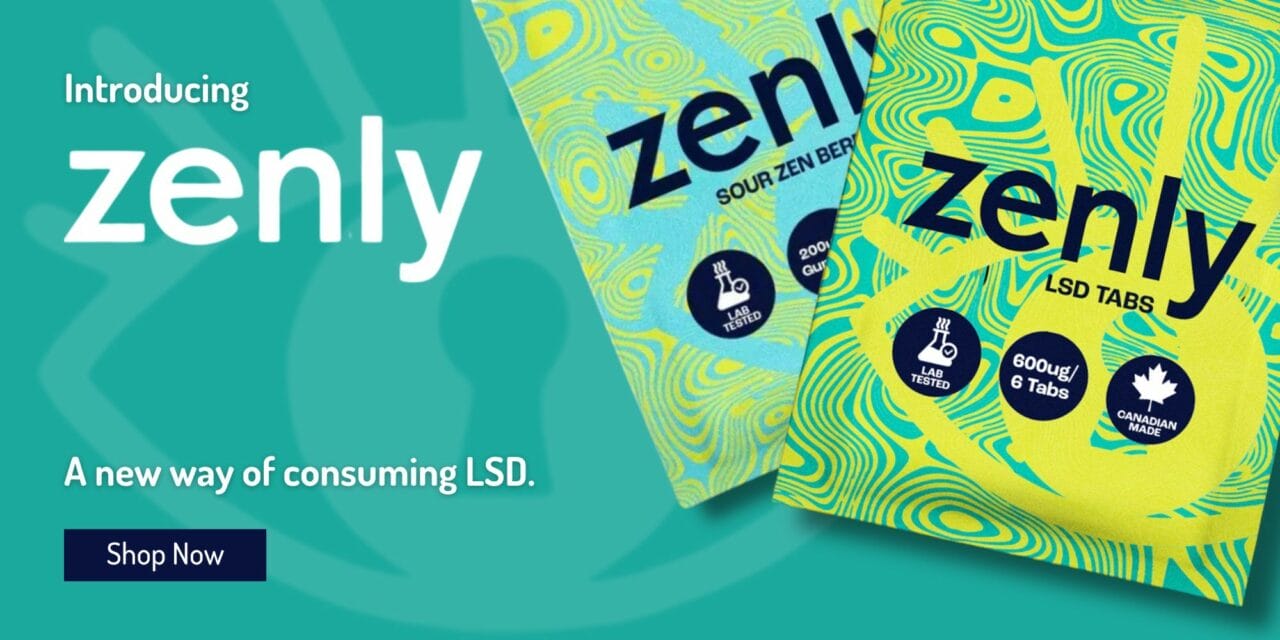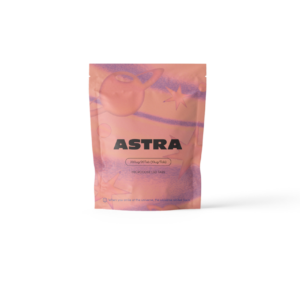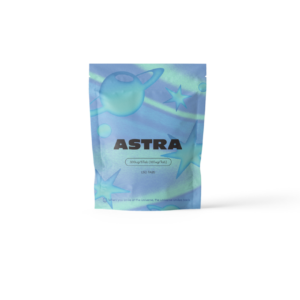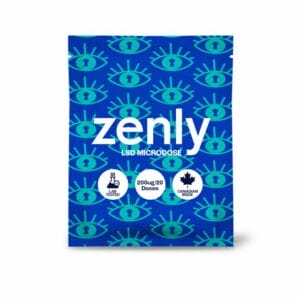-
Astra – LSD Microdose Stars – 200ug (10ug per star) | Funguyz Canada
0 - 0 reviews
$70.00
-
Astra – LSD Stars – 600ug (100ug per tab) | Funguyz Canada
5 - 1 review
$85.00
-
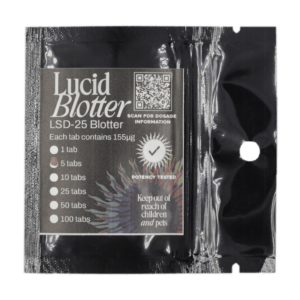
Select options
This product has multiple variants. The options may be chosen on the product page
Lucid Supply Co. – LSD Blotter Tabs – 155µg | Funguyz Canada
5 - 4 reviews
From $20.00
-

Select options
This product has multiple variants. The options may be chosen on the product page
Zenly – LSD Gel Tabs – 600ug (100ug per tab) | Funguyz Canada
4.9 - 16 reviews
From $90.00
-
Zenly – Microdose LSD Gel Tabs – 200ug (10ugx20) | Funguyz Canada
5 - 2 reviews
$90.00
An In-Depth Look at LSD Tabs
LSD tabs, a popular way to consume LSD, are created by immersing small squares of blotting paper in liquid LSD until it evaporates. The packaging often has vibrant or entertaining designs to enhance visual appeal. Each tab measures roughly a quarter of an inch square, and a single sheet can contain approximately 900 doses. The LSD concentration in each tab usually lies between 60ug and 100ug, although some may have higher doses. It’s vital to understand that the actual dosage can vary, emphasizing the importance of testing for an accurate measure of the substance’s potency.…
What is LSD?
Lysergic acid diethylamide (LSD) is a potent hallucinogenic substance that significantly modifies one’s perception and heightens sensory experiences. LSD is derived from “ergot,” a fungus type that grows on rye and other grains. The hallucinogenic properties of LSD were discovered by Dr. Albert Hofmann, a Swiss research chemist, in 1943. It was initially researched for potential insights into certain mental health conditions. In the 1950s, intellectuals like Aldous Huxley experimented with LSD, intrigued by its alleged ability to induce a state of cosmic consciousness.
A Quick Rundown of LSD Research History
Incomplete research has hindered a full understanding of LSD’s true potential and therapeutic benefits. Early investigations into the medical uses of LSD and other hallucinogens yielded substantial information, as recorded in over 1,000 scientific papers and discussed at six international conferences. However, these earlier studies had shortcomings, such as the lack of control groups and potential publication bias. Recently, scientists have been granted permission to revisit LSD use and to explore its potential benefits for treating mental health issues and other health conditions.
LSD Tabs’ Impact on the Body
The body’s response to LSD can significantly vary among individuals. The initial effects following oral ingestion can be felt within 30 to 45 minutes, peaking between 2 to 4 hours, and can last for up to 12 hours or more.
Physical Effects
- Dilation of pupils
- Increased body temperature
- Flushing of the face
- Rapid heart rate
- High blood pressure
- Excessive sweating
Psychological Effects (LSD Trips)
The effects of LSD depend on the dosage taken.
| DOSAGE |
EFFECTS |
| 25 – 75 ug |
- Mild euphoria
- Minor visual enhancements
|
| 75 – 150 ug |
- Alterations in respiration
- Visual distortions varying from light to significant
- Retention of self-awareness
|
| 150 – 200 ug |
- Strong visual phenomena
- Exploration of spirituality
|
| 200 – 300 ug |
- Deep LSD adventure
- Preservation of self-identity
- Emergence of irrational thoughts and recurring patterns
- Colorful visuals when eyes are closed
|
| 300 – 400 ug |
- Dissolution of self or ego
- Active visual effects
- Unsteadiness
|
| 400 – 500 ug |
- Shifts in time perception
- Ego disintegration
- Confusion
- Lack of logical thinking
|
| 500 – 700 ug |
- Difficulty in distinguishing objects
- Severance from reality
- Deep spiritual occurrences
|
| 700 – 1000 ug |
- Complete out-of-body experience
- Loss of rationality
|
| 1000 – 1500 ug |
- Total loss of reality recognition
- Primary emphasis on visual hallucinations
|
| 1500 ug and above |
- Experience similar to the effects of DMT
- Complete loss of self-perception
- Strong visual and auditory hallucinations
- Merging of objects
|
Advantages
It’s a common misconception that the primary purpose of consuming LSD is Clear of Heat
Heat exposure can lead to LSD degradation. Therefore, storing it in a cool location is advisable.
- Storing in a refrigerator can help preserve its potency
|
| Prevent Humidity |
Humidity can also lead to the deterioration of LSD.
- Maintaining it in a dry environment is advantageous
|
LSD, when consumed in controlled amounts, can offer various potential benefits. However, it’s essential to note that the effects of LSD can significantly differ depending on an individual’s body chemistry. Always consult a professional before commencing use of any new substance.
LSD: Beyond Its Traditional Drug Perception
LSD, or lysergic acid diethylamide, is typically perceived as a powerful hallucinogenic drug. However, when consumed in regulated, microdoses, it can provide a host of benefits, including extended sleep, heightened creativity, and reduced anxiety and depression.
Prolonged Sleep
A study conducted in Australia and published on the medRxiv preprint server suggests a potential link between microdosing LSD and longer sleep duration. The researchers examined 3,231 sleep data nights and discovered that participants who microdosed LSD slept an additional 24.3 minutes the following night.
Boosted Creativity
A study published in the Psychopharmacology Journal established a significant relationship between microdosing and increased levels of creativity and openness. Participants showcased their creativity by suggesting unique applications for everyday items like bricks and knives. This suggests an improvement in divergent thinking skills, as they were able to propose more innovative and practical uses for common objects.
Anxiety and Depression
LSD has been noted to trigger profound mystical experiences in both healthy individuals and patients, often culminating in sustained positive mood and personality alterations. This can be beneficial for those struggling with anxiety, depression, and substance abuse disorders (alcohol or nicotine). A study conducted by Peter Gasser from the Medical Office for Psychiatry and Psychotherapy reported a significant decrease in depression levels and considerable improvement in life quality. A follow-up study conducted a year later with nine participants reported continuous reductions in anxiety and enhanced life quality, with no enduring adverse reactions post LSD administration.
How to Consume LSD Tabs?
The usual method among users is to place a single tab or a fraction of a tab under the tongue, similar to an LSD solution, and hold it there for approximately 10 minutes. While some advise keeping it under the tongue for about 45 minutes, anecdotal evidence suggests little difference in After around 10 to 15 minutes, you should start to notice the effects. Once the initial 10 minutes have passed, the blotter can be swallowed or disposed of.
Do LSD tabs become less effective over time?
Yes, the potency of LSD can decrease over time, particularly if it is not stored correctly or if it is exposed to harsh conditions. Therefore, ensuring the right storage conditions is key to maintaining the potency of your tabs. If stored correctly, they can retain their potency for several months or even years.
| Keep Away from Light |
LSD is extremely sensitive to light, particularly ultraviolet (UV) and fluorescent light.
- It is advised to store it in dark places
|
| Limit Heat Exposure |
Heat can cause LSD to degrade, so storing it in a cool place is advisable.
- Keeping it refrigerated can maintain its potency
|
| Maintain Dry Conditions |
Moisture can also cause LSD to degrade.
- It’s beneficial to store it in a dry environment
|
While LSD can provide various potential benefits when used in controlled doses, it’s essential to understand that its effects can vary greatly from person to person due to individual body chemistry. Always consult a professional before starting any new substance. Keep Away from Humidity
Humidity can quicken chemical reactions and promote microbial growth.
- Store them in a well-ventilated room with air conditioning.
- Use silica packets to extend their shelf life.
|
| Avoid High Temperatures |
High temperatures can harm LSD.
- Choose a cool storage location
|
| Limit Air Exposure |
While not as harmful as humidity or heat, exposure to air can cause LSD to degrade.
- Store in airtight containers such as mason jars
|
LSD’s Onset and Duration
Expect the effects to start roughly 30 minutes after ingesting. The intensity will peak around the second hour and begin to lessen around the fourth hour. During this period, the experience can fluctuate and vary in intensity until approximately the sixth to seventh hour (comedown). At this point, some users may start to feel normal again. Typically, users report a complete end to effects about ten hours post-dose. After the experience, it’s common to have extended mood enhancements and elevated consciousness that can continue for several days or even weeks—commonly known as the afterglow.
Purchase LSD from Zoomies Canada
Zoomies Canada supplies high-quality lysergic acid diethylamide and other psychedelic substances. Our Shroomies online shop presents a wide array of LSD products for you to explore at your convenience. Appreciate the ease of receiving LSD directly at your doorstep anywhere in Canada.
Commonly Asked Questions
What does the taste of tabs resemble?
Ideally, tabs should be tasteless. Pure LSD doesn’t possess any flavor or scent. If you notice a bitter or unpleasant taste, or feel a tingling or numb sensation where the tab is placed, it might suggest the material isn’t pure LSD. If your tab has a specific taste, dispose of it immediately. This taste could hint at the existence of a compound called 25I-NBOMe, a substance that replicates the effects of acid but carries significantly higher risks. For safety purposes, it’s advisable to utilize a reagent test kit to verify a small sample of your tab before ingestion. This precautionary measure can affirm the substance’s purity and safety before use.
Are There Various Types of LSD Products?
Certainly, different types of LSD products exist. While blotter paper or tabs are the most common forms, there are also other variants including liquid LSD, sugar cubes or gelatin, and edibles.
What are the Safety Precautions for Using LSD Tabs?
- Employ Ehrlich and Hoffmann reagents for testing.
- If you’re new to LSD, proceed with caution and limit yourself to a single tab.
- If the effects take longer to kick in, remain patient and avoid taking more.
- Ensure you’re in the presence of reliable individuals who stay sober during your experience.
- Evaluate your mental state before taking LSD. If you’re going through anxiety, depression, or distress, it’s recommended to refrain.
- Choose a secure and familiar setting for the substance use.
- Keep your schedule open and dedicate the entire day for your LSD journey, even if the effects wear off after a certain time.
- Refrain from using LSD if you or a close relative have a diagnosed history of schizophrenia or psychosis.
What is Microdosing LSD?
Microdosing is a beneficial strategy for those seeking the health benefits of LSD without the full intensity of a psychedelic trip. This method allows users to harness the potential advantages of LSD at doses typically one-tenth and a twentieth of the usual dosage.
 Select options This product has multiple variants. The options may be chosen on the product page
Select options This product has multiple variants. The options may be chosen on the product page Select options This product has multiple variants. The options may be chosen on the product page
Select options This product has multiple variants. The options may be chosen on the product page
